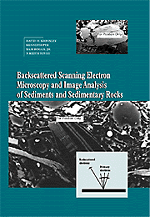9 - Image analysis
Published online by Cambridge University Press: 21 January 2010
Summary
INTRODUCTION
Image analysis is defined as the technique of obtaining quantitative information by measuring the features in an image (Mainwaring and Petruk, 1989). Image analysis has wide application in all fields of science today, including medicine, biology, physical metallurgy, remote sensing, military detection, food sciences, and the earth sciences. It has assumed particular importance in the mineral sciences owing to the need to acquire large amounts of quantitative chemical/ mineralogical information together with morphological data. These requirements make application of image analysis in the mineral sciences more complex, sophisticated, and demanding in terms of instrumentation and automation than is the case for most other sciences.
Although the human eye is good at recognizing patterns and spatial relationships, it cannot make quantitative measurements from an image. Image analysis, on the other hand, has the ability to acquire and process huge amounts of quantitative data. Thus, image analysis lends itself to a range of applications in the fields of sedimentology and sedimentary petrology that include quantitative mineralogical and chemical analysis; analysis of grain size; particle shape and roughness; orientation of fabric or structure; pore size, shape, and volume; and the nature of boundaries between grains.
Images required for analysis can be produced by a variety of instruments, including petrographic microscopes, transmission electron microscopes, and scanning electron microscopes (SEMs). Images generated by SEMs include backscattered electron microscopy (BSE) images, secondary electron (SE) images, cathodoluminescence (CL) images, and X-ray element maps. BSE images are particularly useful for studying features in sedimentary rocks, as described in Chapters 3–8 of this book.
Information
- Type
- Chapter
- Information
- Backscattered Scanning Electron Microscopy and Image Analysis of Sediments and Sedimentary Rocks , pp. 145 - 172Publisher: Cambridge University PressPrint publication year: 1998
Accessibility standard: Unknown
- 1
- Cited by
